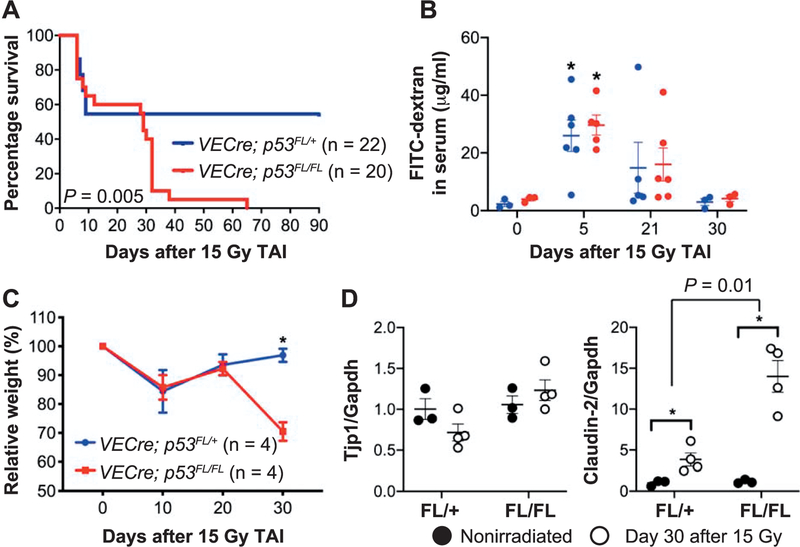FIG. 1.
Deletion of p53 in endothelial cells sensitizes mice to delayed, but not acute, radiation-induced GI injury. Panel A: Kaplan-Meier survival analysis of VECre; p53FL/FL mice (p53 deleted in endothelial cells) and VECre; p53FL/+ mice (p53 retained in endothelial cells) after a single dose of 15 Gy TAI. Panel B: Quantification of FITC-dextran in serum collected from VECre; p53FL/ + (blue) and VECre; p53FL/FL (red) mice at various time points after 15 Gy TAI. Mice were given FITC-dextran via oral gavage 4 h before sacrifice. Serum was collected from each mouse and the concentration of FITC-dextran in serum was quantified. *P < 0.05 by Student’s t test compared to nonirradiated mice. Each dot represents the averaged data from one mouse. Panel C: Change in body weight of VECre; p53FL/ + and VECre; p53FL/FL mice after 15 Gy TAI. *P < 0.05 by two-way ANOVA with Bonferroni post hoc test. Panel D: The expression of tight junction genes Tjp1 (ZO-1) and Claudin-2 mRNA in intestinal epithelial cells from unirradiated mice or at day 30 after 15 Gy TAI. P value was calculated by two-way ANOVA with Bonferroni post hoc test. *P < 0.05. Each dot represents one mouse.

